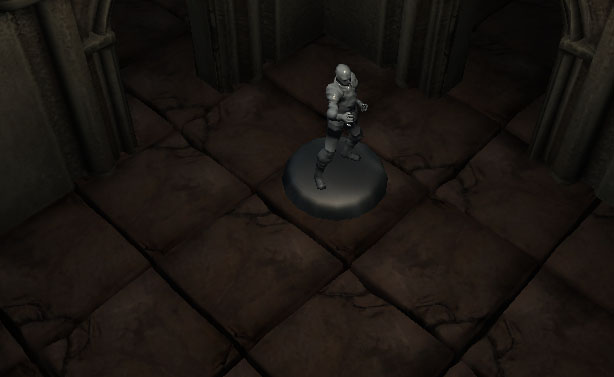 We’re all familiar with feature creep, the adding of features to software until you’ve either bloated the program or significantly deviated from the original intent. Even this early in the process, I suddenly found myself recognizing this happening. While working on some new artwork as I begin adding terrain templates and costs, I realized I was targeting the wrong aesthetic.
We’re all familiar with feature creep, the adding of features to software until you’ve either bloated the program or significantly deviated from the original intent. Even this early in the process, I suddenly found myself recognizing this happening. While working on some new artwork as I begin adding terrain templates and costs, I realized I was targeting the wrong aesthetic.
First it was lighting. I was considering, as I worked with the art, the effects of torches and other motivated light sources. How was I going represent lighting in the world when, for example, the character is carrying a torch or lantern?
Second it was the miniature. I modeled a quick miniature and rigged it to a skeleton so that I could not only pose it, but do some simple animation.
Lastly, it was the materials. I was thinking in terms of real world materials: stone, marble and the like.
Then, I took a step back and remembered what the original intention was: to recreate the tabletop gaming experience with all the miniatures and cast resin walls and floors that most of us never had a chance to use. Off to the web to see how people are using miniatures in the real-world.
Dungeon from LJs Hobbyspot - http://ljshobbyspot.blogspot.com/2010/06/15mm-hirst-arts-dungeon-for-ganesha.html
So here’s my current thinking:
- Lighting - Light assuming the pieces are on a gaming table, primarily ambient with some weak directional lighting. For visibility, have the pieces rendered on top of a battle mat with a grid and hide any pieces that are not “visible” by the character.
- Miniatures - Miniatures should be static, just like real world minis. This has two advantages: 1) I will be more likely to capture the look and feel of classic Grenadier and Ral Partha miniatures if they are “sculpted” as a single mesh without concern for rigging and animation and 2) this will significantly reduce the workload required and allow me to make more miniatures.
- Materials - The target look will be painted and unpainted minis. Any representation of stone, or marble, or wood should look like faux-painted representation of the material.
Thoughts? Is it better to be immersed in the tabletop experience rather than in the dungeon itself?

Yes, yes, yes. Model the table top. Let the MMO boys waist their time and budgets on animated immersion. Keep your target on creating a space for friends to gather. IMHO.
Yep, agree with Eric. Lighting though may be a special case.
There is the “fog of war” effect. Everything I have explored is grey, but I have “mapped” it.
Then there is the “visibility sphere”. Everything outside of your current visibility is black.
Maybe an option to turn the “fog” on and off.